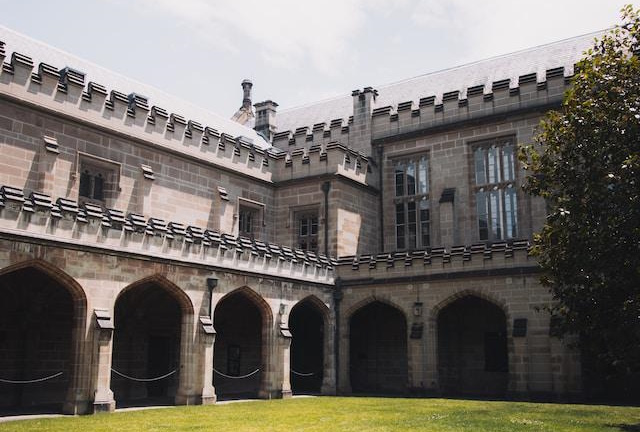Why Is Heritage Roof Tile Restoration a Delicate Process
- Written by Holiday Centre

A roof built of either clay or slate tiles using traditional methods is considered a heritage roof typically found on properties listed as heritage structures. These can be private residential properties, government properties, or commercial buildings. Go here for details on the process of roof restoration.
Still, it’s possible for a building to have a heritage roof and the property itself not to be registered as a heritage building itself. As a rule, the builders of these roofs have paid quite a lot of attention to detail using the highest quality, uncommon materials, including copper and lead roof flashing and natural slate.
These roofs withstand the test of time growing to be quite old, but a replacement is not in the cards when it’s time to upgrade the structure. The roofing contractor will develop a comprehensive plan to restore your tiled roof following a thorough assessment including researching the history and original design.
Roof restoration is a specialised method of preserving the integrity of a heritage roof by carefully replacing areas of damage or repairing them where possible. It could be a more costly approach, but in preserving historic architecture, you’ll retain those historic details, maintain the aesthetic appeal, and increase the property value.
Tiled Roof Restoration for Heritage Homes
Heritage roof restoration involves unique roofing methods meant to preserve the integrity of the heritage structure as they restore your tiled roof. The roofing contractor assesses the historical details along with the roof’s original design to develop an adequate plan for restoring the structure, cleaning it up, and maintaining it.
Aside from the critical need to preserve the original historical look, the priority when restoring a heritage roof is securing the structure’s safety.
That means using roofers that specialise in these projects. One mistake could result in loss of integrity, a change in the aesthetic and a drop in the value. Why go to the trouble of restoring a heritage roof?
-
Historical integrity
By preserving historical integrity, you’re acknowledging and honouring the structure’s story. These roofs reflect the design and build of the time when they were constructed.
In that same vein, they preserve the charm in a community, specific to that area. Maintaining the heritage is showing respect to a culture, preserving it for the next generation to appreciate. Read about what to know before renovating heritage homes at https://www.homestolove.com.au/renovating-heritage-homes-15870.
-
Property value
Heritage structures are higher in value because the materials used to construct these buildings were of a superior quality meant to withstand the test of time. The roofs are structurally phenomenal and beautiful but durable, which is largely why these properties have incredible value.
When people become familiar with the history, they want to preserve that history for the buildings and the roofing. The properties are in high demand creating greater value and higher price points.
-
Energy efficiency
The higher quality building materials for heritage roofs mean the structures are much more energy efficient compared to the modern builds. Design and building techniques were different then compared to now making the roofs capable of withstanding harsh conditions, much abuse and allow great insulation for the home’s interior.
For those fortunate enough to live in a heritage house, the climate control should be noticeable with a reduction in utility costs.
-
Capable of withstanding restoration
When restored adequately, heritage roofs can withstand many more years. It speaks volumes of their durability that these roofs still stand strong today.
These structures have withstood extreme weather for decades leading specialised roofers to the understanding that the structures can undergo restoration in order to be preserved for the next generation.
Preserving The Architectural Heritage of Older Homes
A heritage property is a structure, a residence that has been passed on from previous generations. It has been cared for, preserved, and cherished in order to bring into the future. As the next generation, it’s our turn to take these structures and follow that same path.
Our heritage is the basis of who we are, a cultural foundation leading to critical societal roles. With the restoration of a historic property, there can be many obstacles if the contractor misses the mark with their research. Here are a few steps in preserving a heritage property’s integrity.
-
Reach out to the local council
Because a property is old, it doesn’t necessarily deem it as a heritage structure. The local council in small towns and departments specifically for supporting heritage properties in larger cities will assess the property for its history. Heritage homes will have associated property protection laws.
You will need to follow these restrictions and guidelines in order to preserve the integrity of the property. These can include specific finishes, repair and not replace, a restricted palette.
In some cases, a “Heritage Impact Assessment and Management Plan” is needed to outline the plans for the restoration and how it will affect the historical status of the property.
-
A specialised restoration team is essential
When performing a restoration of a heritage home or roofing structure, it’s essential to have a team of contractors with specific skills to restore original details, those with experience in heritage structure preservation.
There’s a great deal more time and effort, more attention to detail involved in these restoration processes than a typical restoration process. It’s more along the lines of recovering the original structure than a restoration.
Final Thought
Restoring the roofing structure on a heritage home is about preserving the historical integrity while making adequate repairs. When assuming responsibility for a historical project, a priority is to research the history, speak with the local council, get the proper permits, and become familiar with the property.
And ensure that the team you hire is skilled in working with heritage roofs. The right contractors will be familiar with the requirements that go with restoring these properties, the attention to detail, the need to take their time and be precise.







































